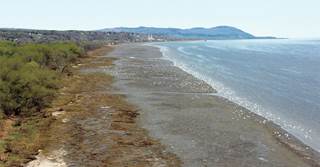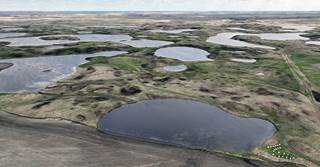Field Reports: 2022 Duck Production Outlook
Wetland conditions have improved on the eastern prairies and in other key waterfowl breeding areas
Wetland conditions have improved on the eastern prairies and in other key waterfowl breeding areas
By DU FIELD BIOLOGISTS

Following a chilly start, temperatures rose rapidly in British Columbia this spring. Returning waterfowl, which arrived one to two weeks later than average, benefited from temporary flooding of agricultural fields and rapid growth of emergent vegetation. While spring precipitation has been below average in the interior, the Peace parklands have received up to 200 percent of normal precipitation, recharging wetlands across this landscape.
Temperatures across this vast region were average in March and slightly below average in April. In the Yukon, a record snowpack delayed the spring thaw as ponds and rivers didnt fully open until late May, and flooding is possible in mountainous areas, where snowmelt continues at higher elevations. In northern Manitoba and Saskatchewan, spring precipitation has been below average, but wetland conditions remain generally favorable for breeding waterfowl.

The waterfowl production outlook varies dramatically across the Canadian prairies. Severe drought continues throughout much of southern Alberta and western Saskatchewan, which have received little runoff and below-average precipitation this spring. In contrast, eastern Saskatchewan and Manitoba have been very wet, and frequent precipitation has filled wetlands and even caused flooding in some areas. Waterfowl nesting efforts are now well under way across the prairies, and numerous breeding pairs and lone drakes of various species have been observed in areas with suitable habitat. The first Canada goose broods have also appeared on schedule.

In northern Ontario and Quebec, precipitation has been well above average, with some areas receiving twice their normal precipitation. Mild spring temperatures have helped maintain favorable wetland conditions for breeding pairs and broods in these areas. In southern Ontario, spring precipitation has been below average, limiting seasonal wetland habitat for breeding waterfowl. The first Canada goose broods appeared in early May, which is typical for this region.
Spring precipitation has been highly variable across Atlantic Canada, ranging from average in New Brunswick to well below average in eastern Nova Scotia. Although water levels have receded in some areas, most wetlands continue to provide favorable habitat for breeding waterfowl. Nest initiation appears to have been on schedule in the south, where the first mallard and black duck broods appeared in mid-May. In northern Newfoundland and Labrador, waterfowl breeding efforts were delayed by colder temperatures and a late spring thaw.

Frequent spring precipitation has relieved drought and recharged wetlands across the eastern Dakotas, improving the outlook for breeding waterfowl, especially for later-nesting species. Although soil moisture levels have increased in eastern Montana, additional precipitation will be needed to break persistent drought in this area.
Average to above-average precipitation has improved wetland conditions across the Great Lakes and northeastern United States, although a few dry areas remain in Michigan, Wisconsin, New York, and New England. Additional rainfall will be needed to maintain wetland habitats for renesting waterfowl and broods in many areas.
California and portions of many other western states remain in the grip of severe drought. This will likely reduce waterfowl production, especially for mallards, in many areas. The outlook is brighter in Alaska, where waterfowl breeding habitat conditions are expected to be good.
Ducks Unlimited uses cookies to enhance your browsing experience, optimize site functionality, analyze traffic, and deliver personalized advertising through third parties. By continuing to use this site, you agree to our use of cookies. View Privacy Policy